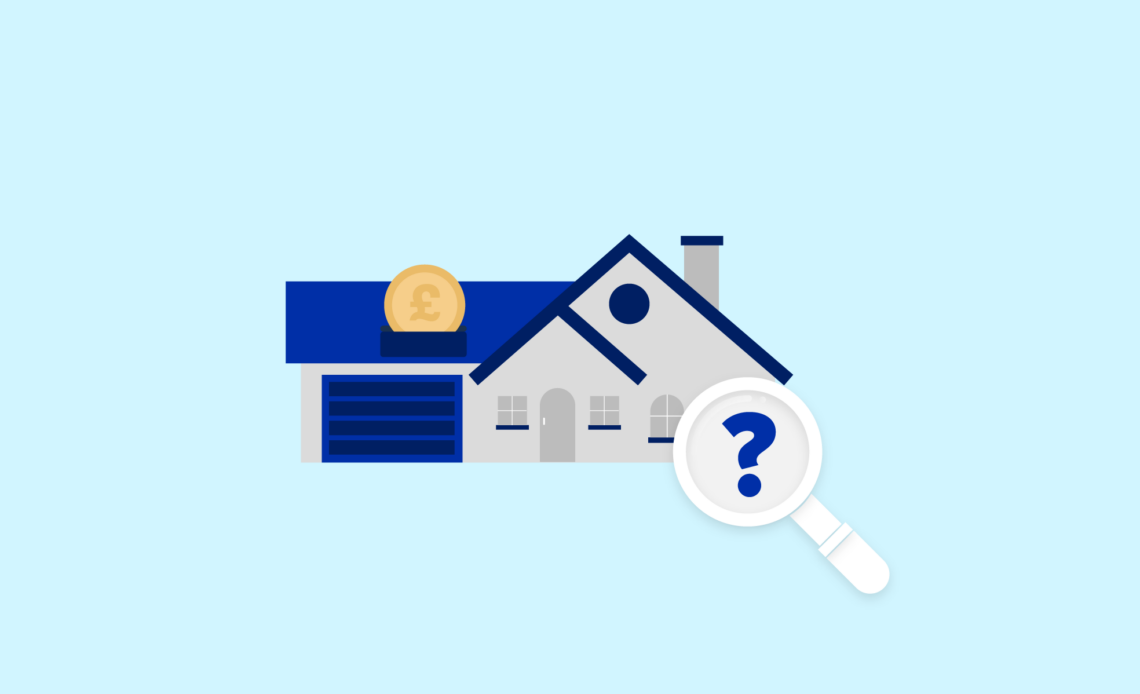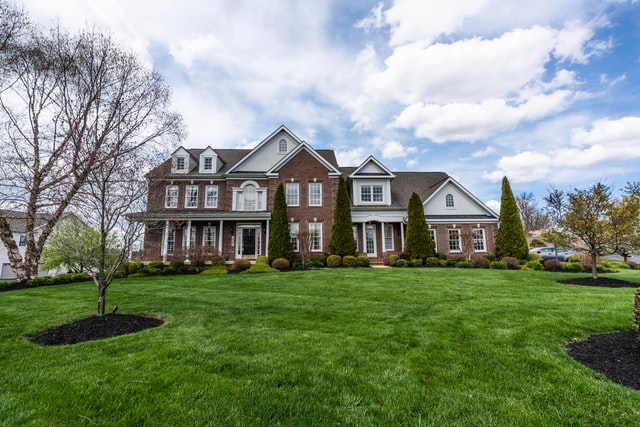
So you are thinking about buying a home; good for you! If you are a first-time buyer in the UK, you probably do not have the cash to buy a house outright.
Instead, you will probably take out a mortgage to pay the bills.
If you are thinking about taking out a mortgage, then you are probably wondering how the process works. You need to think very carefully before securing other debts against your home.
So we put together this comprehensive guide on how mortgages work in the UK, so you can plan your finances and not fall behind on your payments.
What Is a Mortgage?
A mortgage is essentially a type of mortgage loan that you take out to purchase property or land. Mortgages are secured loans, meaning that the lending institution holds the property in question as collateral.
If you fail to keep up with your payments during the term, then the bank or lending institution can repossess your home.
Most mortgages have a term of 25 years, though they can be shorter or longer. The term is determined by how long it would take for you to pay back the loan, plus interest, based on estimated monthly costs.
In the UK, taking out a mortgage is the most common method of buying a home with an average of 40 thousand mortgages being granted each month in the UK.
Although the UK ranks relatively low compared to other European countries in terms of homeownership, it has the largest residential mortgage market in Europe.

How Do Mortgages in the UK Work?
When you take out a mortgage, you pay a portion of the home’s price called the down payment and then the mortgage providers agree to pay the rest.
Then you have to pay the bank or building society back over a certain period of time, usually 25-30 years. There are two different types of mortgage.
Most banks and building societies lend on a capital repayment basis, meaning that you pay back the amount of the home loan over time plus interest.
Other types of mortgage are interest-only. With an interest-only mortgage, you only pay interest to the mortgage broker for the term of the mortgage deal, and at the end of the term, you will have to return the sum you borrowed to the lender.
Interest-only mortgages have lower monthly payments (as you are only paying interest) but there is the fact that you will have to pay back the loaned amount in full to the lender at the end of the mortgage term.
Interest-only mortgages used to be fairly popular, but they have fallen out of favour as mortgage lenders have had trouble getting people to pay back the loans at the end of the term.
How Does Interest on a Mortgage Work?
No matter what kind of mortgage you get you will have to pay interest.
The exact amount of interest you will pay depends on the specific terms of your mortgage agreement. Factors that affect the kind of interest that you pay include your income, debt-to-asset ratio, the length of the mortgage term, previous borrowing history, credit score, etc.
Most of the time, mortgage loans will go through a period of fixed interest, then a period of variable interest.
As the name implies, fixed interest means that the base rate stays the same from month to month while the standard variable rate can change from month to month. Some mortgage agreements are fixed-rate or variable rate only.
In 2020, average fixed-interest rates for residential home mortgages were at the lowest they have been since the Bank of England started recording base rates at 2.36%.
For the past few years, lender’s standard variable interest rates on residential home mortgages have been hovering at an average of 3.54%.
Fixed interest rate mortgages are a good choice because your monthly repayments are stable. You will pay the exact same amount month to month so fixed-rate mortgages are much easier to budget for.
Variable interest rate mortgages can be a double-edged sword. When the base rate drop, this drop can get passed on to you and your monthly repayments might go down.
However, if interest rates rise, then this cost will be passed to you and your monthly repayments will probably go up.
At the start of your mortgage agreement, most of your repayments will go to interest. As time goes on, you will gradually start paying off m9ore of your capital over time.
How Does a Mortgage Deposit Work?
When you take a mortgage out, you will have to pay for part of the property on your own. This initial amount is called the deposit.
Most of the time, the initial deposit is shown as a percentage value of the price of the property. So for example, if you bought a house for £300,000, then a 10% deposit would be £30,000.
In general, a normal initial deposit for a home mortgage is 10% The other 90% is then paid by the bank. This particular measure is what is called the Loan-to-Value (LTV).
The LTV is essentially the percentages of the property price that you need to borrow to be able to purchase the home.
Since your initial deposit would be 10%, then the LVT would be 90% because you need to borrow 90% of the home’s market value to pay for it.
All other things being equal, you should try to put down a larger initial deposit if you can. The larger your initial deposit, the lower your interest rates will be and the less time it will take you to pay off your mortgage.
The lower the loan to value, the lower you will have to ultimately pay by the end of the term. Usually, a buyer who can make at least a 40% initial deposit gets the best mortgage rates.
How Does a Mortgage Work When Selling a Home or Moving?
Very often, a person will need to move or sell their home before entirely paying off their mortgage. There are several different mortgage options you can take at this point.
Most of the time, a lender will allow you to “port” your existing mortgage to a new property.
Basically, they will rework your current mortgage to work for your new property. You most likely will have to essentially apply for a mortgage again and show your lender that you can still afford to make monthly payments.
Ultimately, it is up to your mortgage lender whether they will allow you to transfer your mortgage to a new property. You will also most likely have to pay fees for moving your mortgage.
If your new home costs more than your previous home, then you can also ask your lender to supply the additional funds for your new home after transferring your old mortgage over.
Keep in mind though that your lending institution may not allow this, and if they do, then you will likely be borrowing at different rates.
If your current lender will not let you transfer your mortgage but you are not tied into it, then you could apply for a remortgage with a new lender for your new property.
Remortgaging allows you to pay off your current mortgage with funds from a new mortgage, often at different rates.
UK Mortgage FAQ!
What Is the Average Mortgage in the UK?
Like we said earlier, the UK has the largest mortgage market in Europe despite ranking relatively low in homeownership rates.
As of 2020, the average mortgage debt in the UK is £137,394 the total number of mortgages was 10.94 million and the average price of a home was £227,283.
Mortgage approvals have drastically fallen in recent years, brought on by both Brexit and the COVID-19 pandemic. The outstanding value of all mortgages in the UK as of the end of 2020 was £1.5 trillion (yes, that’s a “t”).
AS far as interest rates go, the average 2-year fixed interest rate for a 95% LTV was 3.99% while the average 2-year fixed interest rate for a 75% LTV was 1.49%. The average 3-year fixed rates for a 75% LTV was 1.70%. Across all mortgages, the average variable rate was 4.33%.
When it comes to length, most mortgages take 25-35 years to pay back. In previous decades, a 25-year mortgage was the most common option but recently 30-year mortgages have become more popular.
Longer-term mortgages are becoming more popular because they make monthly payments lower. Given that wages have largely fallen stagnate for a majority of the UK working population, longer mortgages are beneficial because they have more time to pay them off.
However, a longer-term usually means you are paying substantially more in the long-term due to interest.
So to put all this together, the average Brit has a 30-year mortgage for $137,394 and has a 2-year fixed interest rate between 2.00% and 4.00%.
Additionally, the average monthly payment for mortgages is about £671 a month, or £154.90 a week or £8,054 a year.
What Other Costs Are Involved in a Mortgage?
The two main costs for a mortgage are the capital and the interest payments. However, mortgages have a bunch of other smaller costs.
Depending on your institution, you might have to pay a mortgage application fee, processing fee, and closing fee. Some mortgage agreements will also charge an “early repayment” fee if you repay the mortgage before the terms of the agreement are up.
Usually, the largest additional cost is closing costs. The typical closing cost for a mortgage can be anywhere between 2%-5% of the price for the home, though this number can vary.

Can You Get a Mortgage to Include Renovations in the UK?
In general, no. Traditional mortgages will not include funds for covering renovations or repairs to a property.
Traditional mortgages only cover the costs of actually purchasing the property, not fixing it up. Lenders will not give you more than the house if worth and the max amount you can get is 95% the housing market value of the house.
However, you can apply for other kinds of loans to cover the costs of renovations that exceed the property value. Be warned though; conventional loans in the UK generally have much stricter payment requirements and higher interest rates.
What Do I Need to Qualify for a Mortgage in the UK?
The most important factors that depend on what kind of mortgage you can get are your income and debt.
Lenders will take into account how much money you make and how many outstanding bills and debts you have when deciding on the terms of your loan. As you might expect, the more debt you have, the more of a risk you will be considered so you will get worse loan terms.
Mortgage brokers will also perform a credit check and do a ‘stress test’ of your finances to determine if you could still afford the mortgage when interest rates rise.
Additionally, in order to submit a mortgage application, you will need:
- Utility bills
- P60 form from your employer
- Payslips for the last 3 months
- Passport or other official proof of identity
- Tax return form SA302 if you have earnings from more than one source of income
- Proof of benefits received (if applicable)
It is important you are very accurate when determining when reporting your finances and many lenders might require additional documents to ascertain your specific financial situation.
Also, printouts of online versions of your documents most likely will not suffice. You will need hard copies certified by your solicitor.
Final Thoughts
Securing a mortgage is the most popular and available method to acquire homeownership in the UK, so if you are going to buy a property then you will most likely need a mortgage.
If you are applying for a mortgage, make sure you have calculated the costs and understand how much you can afford in monthly payments. Your housing budget should also include some wiggle room in the case that interest rates go up.
Securing a mortgage might seem like a daunting task, but with a little bit of planning and preparation, it is the most effective and safest method for purchasing a home for first-time buyers.
- The 9 Best UK Money Management Apps (2025) – for individuals and couples - August 8, 2024
- What Salary Should You Be Making At Your Age? (UK Guide) - August 8, 2024
- The Top 10 Most Ethical Banks in the UK: A Comprehensive Review for 2025 - August 8, 2024

4 Comments